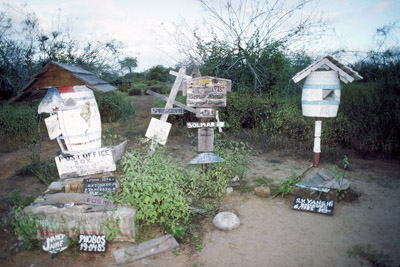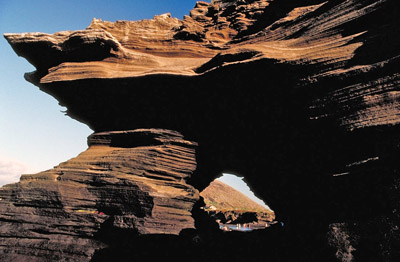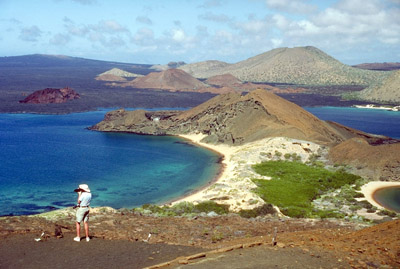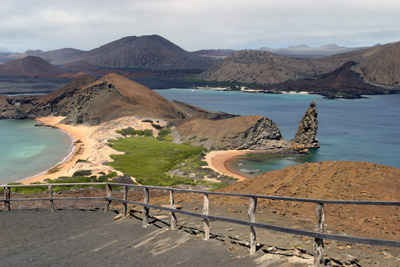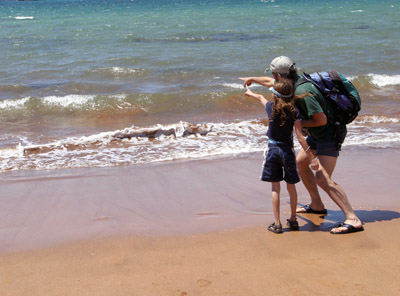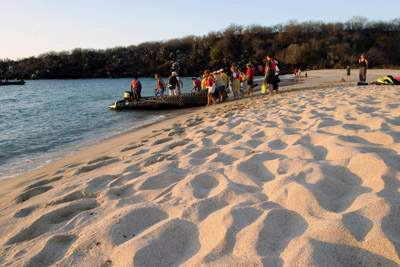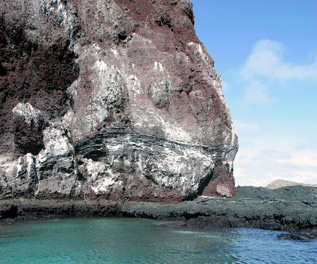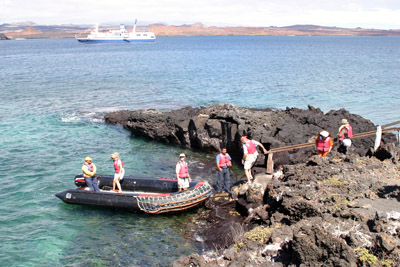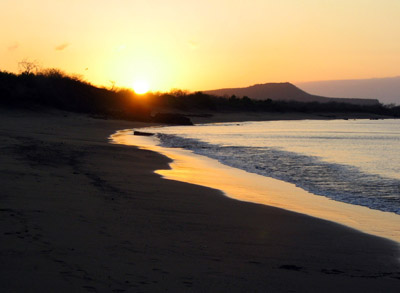The Galapagos Archipelago is a collection of volcanic oceanic islands where some rock is 3-5 million years old and some rock is still being formed. The islands are often individually formed from single volcanoes that form as the tectonic plate moves over a volcanic hotspot. The largest island of Isabela was formed from six volcanoes that met and filled in the gaps between them.
Some islands are low and others are mountainous, they present a range of dry lowlands and damp highlands, modified further by the prevailing winds.
Galapagos Islands Landscapes - Travel Pictures
Unlike many other eco-tourism destinations, the Galapagos are particularly suitable for children, they are also suitable for more senior travellers (though the National Park System asks that visitors be at least 7 years old to protect the wildlife, the nesting habitats, and the welfare of the child).
Many places are just as they were when Darwin visited in 1835, and at that time, they were just as they always were, clean unspoiled and without the influence of man.
Ships Post - Letters from ships on long voyages would be left at this informal "Post Office" to be picked up by others heading back home.
Some of the more frequented areas on the islands have features such as steps and handrails installed to aid the passage of visitors, it may not look terribly natural, but if visitors were not channeled along specific routes, they would have a far greater impact on an area as they spread out, so causing erosion over a much larger area.
Pinnacle Rock in the background with a small sunken volcanic crater in the fore-ground, more evidence of the activity that built the Galapagos Islands from the "Galapagos Hotspot" under the Nazca oceanic plate as it allowed lava to break through cracks in the earth's crust to reach the surface.
Cruising in the Galapagos means that it is the passengers who are "in the cage" and the wildlife outside free to roam. The boats and ships move around readily from island to island making travel very relaxed and comfortable, always surrounded by full facilities and the freedom to move around the vessel. Shore-trips are regular and there are not protracted periods of sailing in open sea. Activities are on the basis of doing as much as you want, if you simply don't want to join an excursion, you don't have to, pick and choose according to ability and preference. Certain cruises are specifically aimed at families with family oriented facilities and activities and of course a greater chance that there will be other children on the vessel for new found friends - always a boon for the parent on holiday!
Like the Sea Lions, sometimes it's easiest for people to get ashore on a gently sloping sandy beach too..
People seem to either 'see" geological features or they don't, if they don't it's just a load of rock they're looking at with some bits that have different colours to other bits. The Galapagos have a lot of the geology on the surface however and it's worth making the effort to ask the guides and / or read about what you're looking at, a whole new dimension could be opened up to you that you'd just not noticed before.
Ship to shore trips are usually by an outboard powered inflatable boat called a "panga" in the Galapagos (as opposed to parts of Africa where a panga is a machete!). These land in calm and sheltered places, where it is usually possible to get off and on easily, but be prepared to sometimes get your feet wet.



